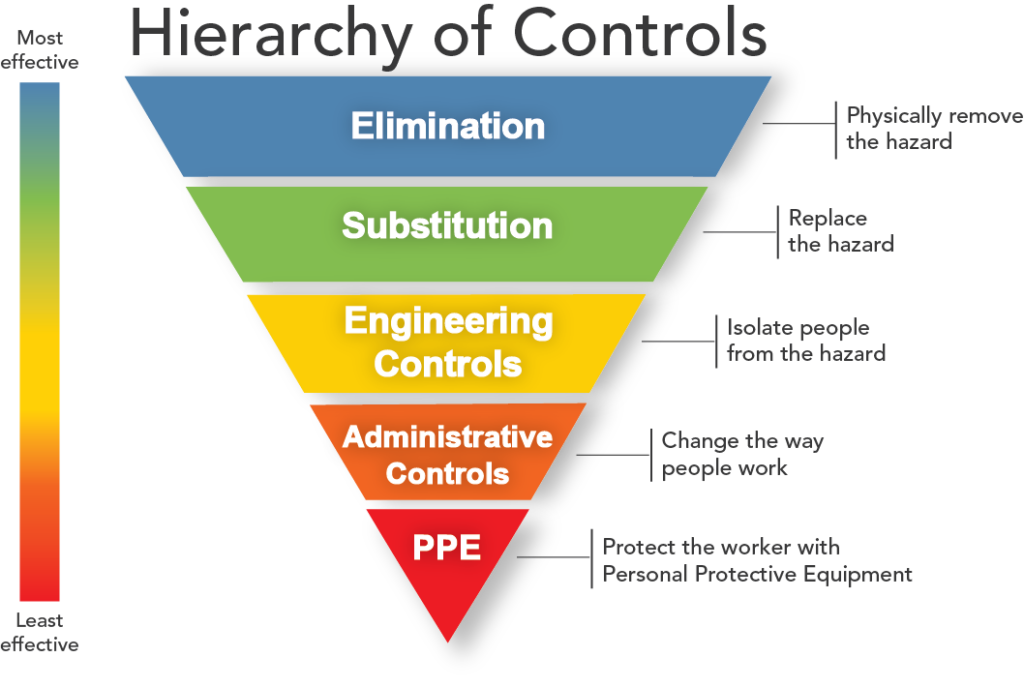The Hierarchy of Controls is a philosophy used to determine what control measures to use when addressing a particular occupational health & safety hazard. The logic underlying the Hierarchy of Controls is that a company will utilize strict control measures rather than those that are more likely to fail and incur unnecessary risks.
Examples of each control measure detailed below:
1. Elimination
- Remove damaged equipment from service and repair immediately
- Ensure equipment meets the ergonomic needs of users e.g. work benches & tables
- Remove noisy equipment or machinery from an otherwise quiet area
- Circulate material via email to eliminate excessive photocopying and collation
2. Substitution
- Substituting a hazardous chemical with a less dangerous one.
3. Engineering Controls
- Ensure all forklifts have roll-over cages or frames.
- Equip all tools with manufacturer’s guards that prevent exposure
- Change bench or rack heights to reduce bending or crouching
4. Administrative Controls
- Provide alternative tasks for workers to prevent continuous keyboard work for long periods.
- Rotate tasks for those considered ergonomically challenging and prone to soft tissue injuries.
- Training and education on Safe Work or Job Procedures to include:
- Identify and assess risks.
- BIPP (Back Injury Prevention Program) and other ergonomic issues.
- Know and apply the local legislative requirements e.g. OSHA, OH&S, and WHIMS
- Safe use of mechanical aids, equipment, and tools
5. PPE
- Last line of defense! When all controls have been exhausted and a hazard is still prevalent, PPE may minimize or possibly prevent an injury from occurring.
- Wear ear plugs while tasked in noisy areas or when exposed to 85 DB and greater
- Wear eye protection at all times when on the yard
- Wear task-specific gloves at all times when on the yard to protect against abrasions, cuts, and chemicals
- Hardhats are required at all times for yard staff.
- The yard staff is required to wear HighVis attire. This includes long sleeves and pants (no sweatpants).
- Safety Toe Footwear is required for all yard staff.
- Things to consider when determining PPE:
- What is the appropriate PPE for the task?
- Is the employee donning it properly?
- Is the equipment in a satisfactory state to provide the level of protection intended?
Upon meeting these PPE requirements, AT-PAC has both a right and a duty to enforce the use of said PPE up to imposing penalties or counseling, if necessary.
Using the Hierarchy of Controls is a reiterative process – as individual control measures are put in place, it’s important to revisit and re-evaluate risks to determine if mitigation has been achieved or if an acceptable level has been achieved. If not, additional controls will need to be developed and introduced.
Note* Should there be a hazard where you are not able to eliminate or engineer out of the task Corporate Safety should always be consulted.

